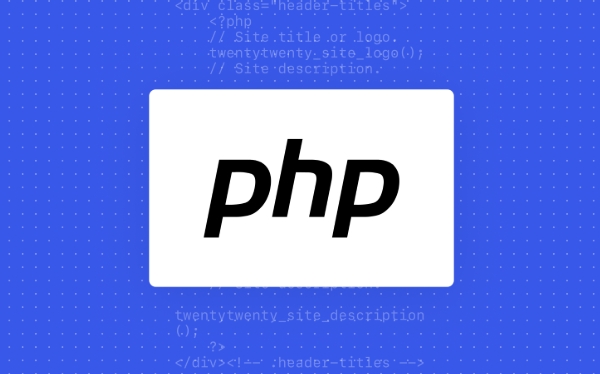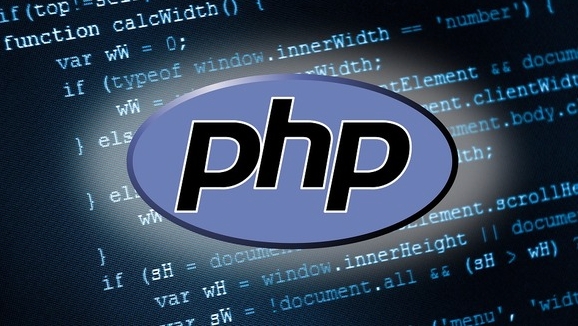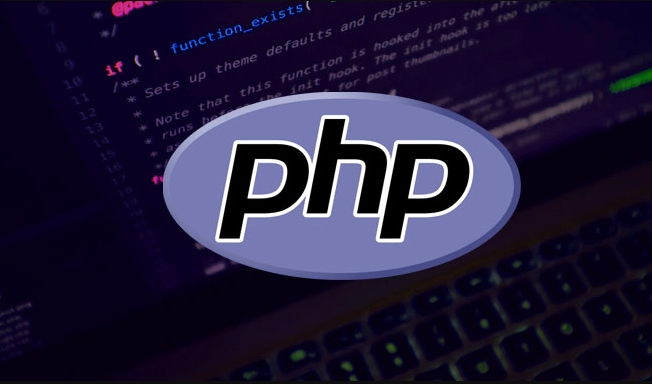The key to installing PHP extensions is to clarify the environment and source. 1. First determine the PHP installation method, which can be viewed through php -v and which php; 2. If you use Linux/macOS package manager to install PHP, use the corresponding commands such as apt, yum or brew to install the extension and restart the service; 3. If you install from the source code or need to customize the extension, you can install it by PECL and manually add extension=xxx.so to php.ini; 4. Under Windows, you need to download the matching DLL file, put it in the ext directory and enable it in php.ini. As long as you follow the steps, the installation process is not complicated.

Installing PHP extensions is not difficult, the key is to figure out your environment and where the extension comes from. Different systems and installation methods will be somewhat different, but the overall idea is similar.

1. Confirm your PHP installation method
Before you start, figure out how you installed PHP:

- Is it installed using the system's package manager (such as apt, yum, brew)?
- Or compiled and installed from the source code?
- Or use integrated environments like XAMPP, WAMP, MAMP?
This will affect how you install the extension later. If you are not sure, you can run php -v and which php in the terminal to see the path and version information.
2. Install the extension using the package manager (for Linux/macOS)
If you are installing PHP through the system package manager, the extension usually has corresponding packages. For example:

- Ubuntu/Debian:
sudo apt install php-xxx - CentOS/RHEL:
sudo yum install php-xxx - macOS (Homebrew):
brew install php@xxcorresponding extension
Common extension names are:
-
php-curl -
php-mysql -
php-mbstring -
php-xml
Don't forget to restart Apache or PHP-FPM after installation:
sudo systemctl restart apache2 # or sudo systemctl restart php-fpm
3. Install the extension using PECL (for custom installations)
If you are installing PHP from source, or want to install some extensions that are not in the system repository, you can use PECL:
- First confirm whether
php-pearis installed (PECL depends on it) - Then execute:
pecl install xxx - After the installation is complete, add
extension=xxx.soinphp.ini
For example, install the Redis extension:
pecl install redis
Then edit php.ini plus:
extension=redis.so
Sometimes you may need to manually specify the .so file path, especially if you have multiple PHP versions.
4. How to install PHP extension in Windows?
Generally, on Windows, php.ini is used to enable dynamic link library (DLL) files:
- Find the extended DLL file (the corresponding version can be downloaded from the PECL official website )
- Put
.dllinextdirectory of PHP - Add:
extension=php_xxx.dllinphp.ini
Note: Be sure to ensure that the DLL matches your current PHP version and thread-safe pattern, otherwise an error will be reported or even PHP startup failure will be caused.
Basically these are the operations. Although the steps seem a bit too many, as long as you understand your environment and follow the steps, the installation and extension are not complicated, but the details are easy to ignore.
The above is the detailed content of How to install PHP extensions?. For more information, please follow other related articles on the PHP Chinese website!

Hot AI Tools

Undress AI Tool
Undress images for free

Undresser.AI Undress
AI-powered app for creating realistic nude photos

AI Clothes Remover
Online AI tool for removing clothes from photos.

Clothoff.io
AI clothes remover

Video Face Swap
Swap faces in any video effortlessly with our completely free AI face swap tool!

Hot Article

Hot Tools

Notepad++7.3.1
Easy-to-use and free code editor

SublimeText3 Chinese version
Chinese version, very easy to use

Zend Studio 13.0.1
Powerful PHP integrated development environment

Dreamweaver CS6
Visual web development tools

SublimeText3 Mac version
God-level code editing software (SublimeText3)

Hot Topics
 What are some best practices for versioning a PHP-based API?
Jun 14, 2025 am 12:27 AM
What are some best practices for versioning a PHP-based API?
Jun 14, 2025 am 12:27 AM
ToversionaPHP-basedAPIeffectively,useURL-basedversioningforclarityandeaseofrouting,separateversionedcodetoavoidconflicts,deprecateoldversionswithclearcommunication,andconsidercustomheadersonlywhennecessary.StartbyplacingtheversionintheURL(e.g.,/api/v
 How do I implement authentication and authorization in PHP?
Jun 20, 2025 am 01:03 AM
How do I implement authentication and authorization in PHP?
Jun 20, 2025 am 01:03 AM
TosecurelyhandleauthenticationandauthorizationinPHP,followthesesteps:1.Alwayshashpasswordswithpassword_hash()andverifyusingpassword_verify(),usepreparedstatementstopreventSQLinjection,andstoreuserdatain$_SESSIONafterlogin.2.Implementrole-basedaccessc
 What are the differences between procedural and object-oriented programming paradigms in PHP?
Jun 14, 2025 am 12:25 AM
What are the differences between procedural and object-oriented programming paradigms in PHP?
Jun 14, 2025 am 12:25 AM
Proceduralandobject-orientedprogramming(OOP)inPHPdiffersignificantlyinstructure,reusability,anddatahandling.1.Proceduralprogrammingusesfunctionsorganizedsequentially,suitableforsmallscripts.2.OOPorganizescodeintoclassesandobjects,modelingreal-worlden
 What are weak references (WeakMap) in PHP, and when might they be useful?
Jun 14, 2025 am 12:25 AM
What are weak references (WeakMap) in PHP, and when might they be useful?
Jun 14, 2025 am 12:25 AM
PHPdoesnothaveabuilt-inWeakMapbutoffersWeakReferenceforsimilarfunctionality.1.WeakReferenceallowsholdingreferenceswithoutpreventinggarbagecollection.2.Itisusefulforcaching,eventlisteners,andmetadatawithoutaffectingobjectlifecycles.3.YoucansimulateaWe
 How can you handle file uploads securely in PHP?
Jun 19, 2025 am 01:05 AM
How can you handle file uploads securely in PHP?
Jun 19, 2025 am 01:05 AM
To safely handle file uploads in PHP, the core is to verify file types, rename files, and restrict permissions. 1. Use finfo_file() to check the real MIME type, and only specific types such as image/jpeg are allowed; 2. Use uniqid() to generate random file names and store them in non-Web root directory; 3. Limit file size through php.ini and HTML forms, and set directory permissions to 0755; 4. Use ClamAV to scan malware to enhance security. These steps effectively prevent security vulnerabilities and ensure that the file upload process is safe and reliable.
 How can you interact with NoSQL databases (e.g., MongoDB, Redis) from PHP?
Jun 19, 2025 am 01:07 AM
How can you interact with NoSQL databases (e.g., MongoDB, Redis) from PHP?
Jun 19, 2025 am 01:07 AM
Yes, PHP can interact with NoSQL databases like MongoDB and Redis through specific extensions or libraries. First, use the MongoDBPHP driver (installed through PECL or Composer) to create client instances and operate databases and collections, supporting insertion, query, aggregation and other operations; second, use the Predis library or phpredis extension to connect to Redis, perform key-value settings and acquisitions, and recommend phpredis for high-performance scenarios, while Predis is convenient for rapid deployment; both are suitable for production environments and are well-documented.
 What are the differences between == (loose comparison) and === (strict comparison) in PHP?
Jun 19, 2025 am 01:07 AM
What are the differences between == (loose comparison) and === (strict comparison) in PHP?
Jun 19, 2025 am 01:07 AM
In PHP, the main difference between == and == is the strictness of type checking. ==Type conversion will be performed before comparison, for example, 5=="5" returns true, and ===Request that the value and type are the same before true will be returned, for example, 5==="5" returns false. In usage scenarios, === is more secure and should be used first, and == is only used when type conversion is required.
 How do I perform arithmetic operations in PHP ( , -, *, /, %)?
Jun 19, 2025 pm 05:13 PM
How do I perform arithmetic operations in PHP ( , -, *, /, %)?
Jun 19, 2025 pm 05:13 PM
The methods of using basic mathematical operations in PHP are as follows: 1. Addition signs support integers and floating-point numbers, and can also be used for variables. String numbers will be automatically converted but not recommended to dependencies; 2. Subtraction signs use - signs, variables are the same, and type conversion is also applicable; 3. Multiplication signs use * signs, which are suitable for numbers and similar strings; 4. Division uses / signs, which need to avoid dividing by zero, and note that the result may be floating-point numbers; 5. Taking the modulus signs can be used to judge odd and even numbers, and when processing negative numbers, the remainder signs are consistent with the dividend. The key to using these operators correctly is to ensure that the data types are clear and the boundary situation is handled well.






